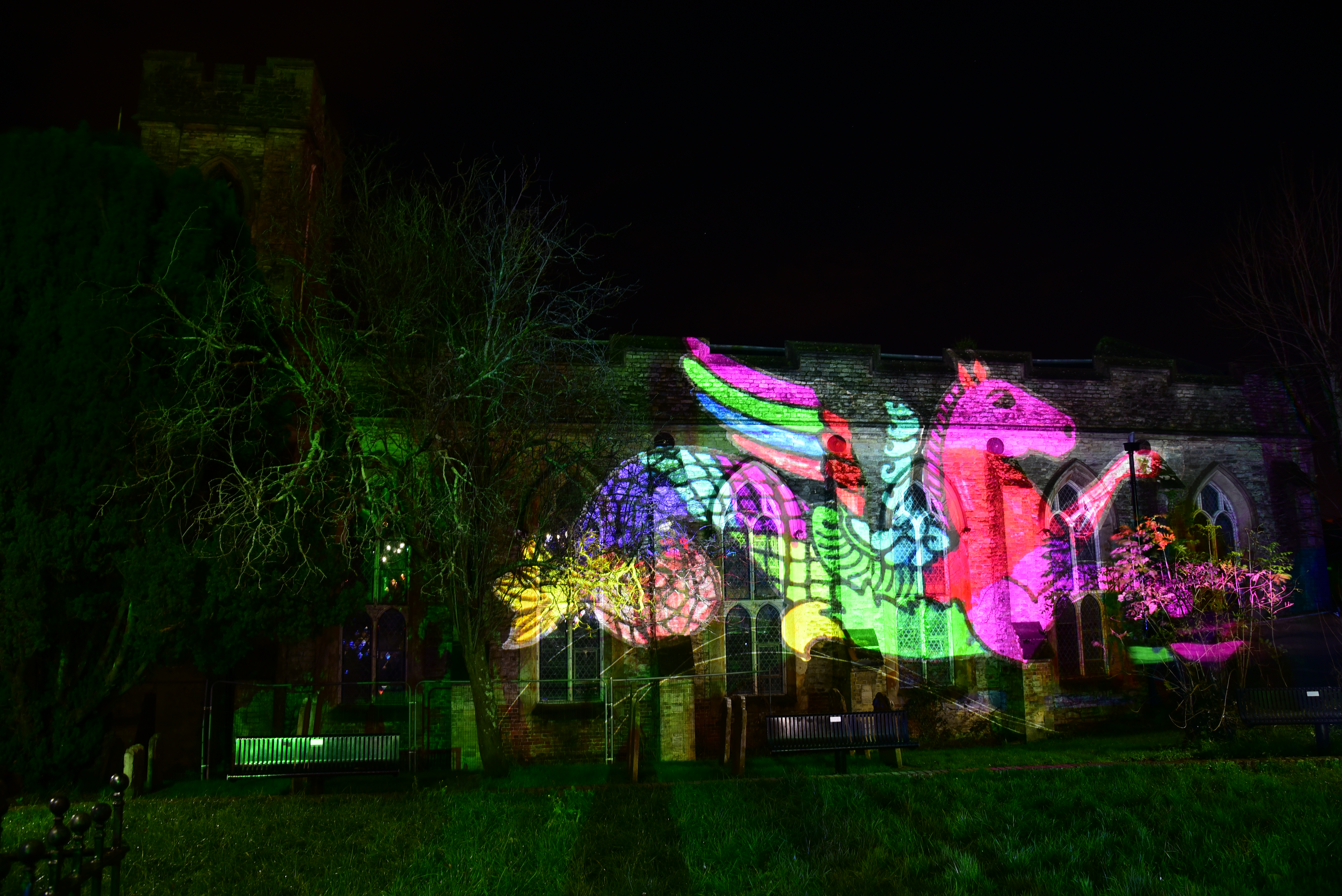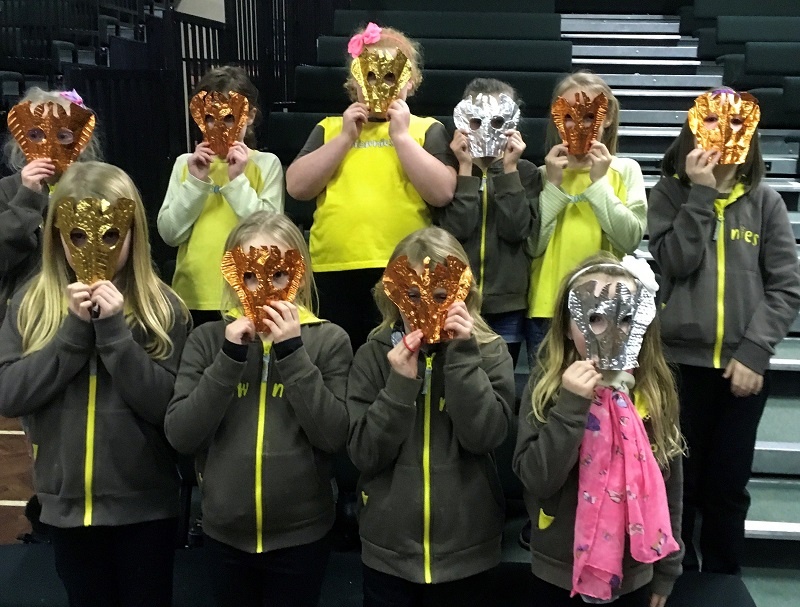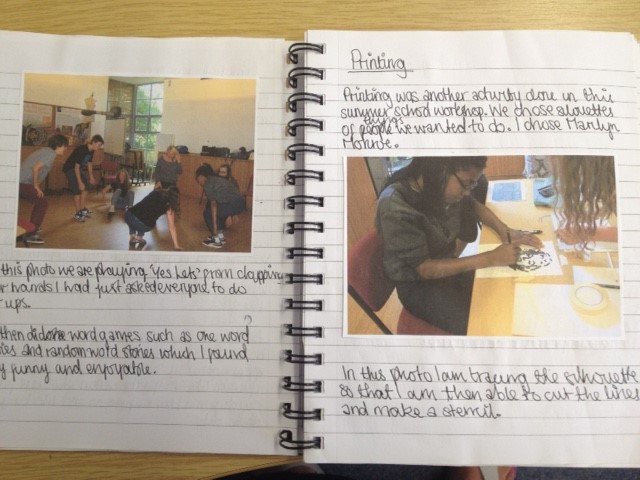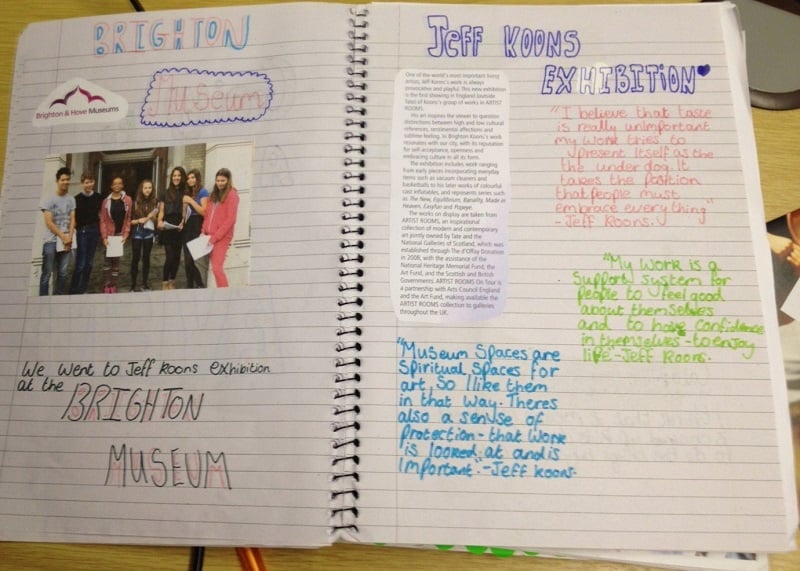
Project Projection – Illuminating young creativity through Arts Award Discover
BY: Guest Writer
28 Aug 2025
Concluding our celebration of digital arts on the blog this month, Hannah Ray, Director at New Carnival in the Isle of Wight tells us about a unique Arts Award Discover project involving digital projection art and culminating in a public projection of their participant’s creations on the walls of a local church.
New Carnival is a celebratory outdoor arts-focussed community interest company, an Arts Council England-funded NPO (National Portfolio Organisation), and a Trinity Champion Centre. We deliver vibrant, exciting and inventive carnival-based art projects inspired by the natural environment, heritage and the world we live in.
We have been delivering Arts Award for several years as part of our commitment to supporting arts, environmental and heritage education. We were originally drawn to Arts Award as a way to deepen and formalise arts learning experiences, particularly at a time when the arts are being increasingly sidelined in formal education.
We believe that access to the arts is transformative, especially for children from disadvantaged backgrounds. On the Isle of Wight, one in three children lives in poverty, and the East Wight area is reported as among the most ‘left behind’ in England by the Independent Commission on Neighbourhoods (‘Think Neighbourhoods’; March 2025). For these young people, access to creative experiences can be profound.
Most of our Arts Award work has focused on Discover and Explore levels with primary schools, but we’ve also supported Bronze level delivery with young people recently moved out of mainstream education. We’ve experimented with different formats, including short courses and ‘Arts Award in a Day’ models to suit different needs.
Project Projection and Arts Award Discover
In December 2023, New Carnival brought a long-standing dream to life integrating digital projection art into our annual winter event Merry and Bright: Festival of Light. Thanks to funding from the Portsmouth Guildhall Hornpipe Trust, we launched Project Projection, a unique creative journey involving pupils from Dover Park Primary, St Mary’s Catholic Primary, and young people from Network Ryde youth centre on the Isle of Wight. As part of this project these pupils worked towards achieving Arts Award Discover.
For Part A (Discover), the project introduced children and young people to creative careers within digital arts, some of which were even new to the teachers. The rich history of projection was explored; ranging from shadow puppetry in ancient China to Victorian magic lantern shows and the modern world of projection mapping. It provided not just a window into the past and future of visual storytelling, but an opportunity to explore light-based art.
Continuing Part A, in the arts activity workshops participants explored analogue projection techniques, experimenting with overhead projectors and psychedelic ‘60s-style oil and ink light effects. They experimented projecting their own acetate drawings and creating impromptu puppet shows.
We looked at the work of three artists for Part B (Find out) for inspiration and examples of making analogue and digital projection techniques into a career. Sophie Kenny, founder of ‘Astral Projections’, an events company based in London who utilise the analogue 1960’s psychedelic oil techniques. Ben Francis, of Loki Media, an international Visual Jockey (VJ), who works for DJ Calvin Harris and lives on the Isle of Wight (an example of the live stage show, video content on LED screens, lights and pyrotechnics, can be seen here). Finally, artist Julian Dorrell, from Light Art Creatives based in Bournemouth who was helping to bring this project to life.
After practical workshops and research on the topic, the young people were then asked to design and colour symbols representing the town’s heritage, which were then digitised and transformed into a public art piece.
Their work culminated in a stunning public display on the historic St Thomas Church (now home to Network Ryde), a central feature of the Merry and Bright: Festival of Light. Professional artist Julian from Light Art Creatives digitally mapped the children’s images onto the church, combining them into a dazzling light show. Hundreds, perhaps thousands, gathered to witness this vibrant display of youth creativity in a shared public space.
Impact
The public outcome added real weight to the project. For many of the young participants, seeing their work projected on a large-scale public platform was deeply validating. As one teacher commented, the experience broadened her understanding of the legacy and potential of projection in the arts, connecting ancient traditions to today’s cutting-edge technology.
Project Projection was a great success with 45 children and young people achieving Arts Award Discover across the three groups. Each primary school received a full day of activities; an introduction, practical workshops, and a reflection and sharing session to complete Part C (Share) after the event. The youth centre group participated in three shorter evening sessions tailored to their schedule.
One of the project’s biggest challenges was the short timeframe. The funding confirmation came in early October, with the event scheduled for December. We had hoped to include a high school group, but short notice and timetable constraints made this difficult. Despite this, the project succeeded in fusing heritage and innovation into an exciting, inclusive experience.
You can view examples of the children’s work from Project Projection in our full report submitted to funders, as well as the relevant resources here.
Arts Award provides a valuable structure and an official recognition of young people’s creative achievements. Receiving a certificate, and sometimes even a badge, adds a level of prestige and pride that shouldn’t be underestimated. For young people working at the higher levels, Arts Award can also offer a stepping stone towards creative qualifications and careers, providing a viable alternative to more traditional education pathways.
Its flexibility is one of its greatest strengths: it can be tailored to suit any ability level and can adapt to individual needs, making it a truly inclusive qualification.
Header image by Tracy Curtis




Comments & Replies